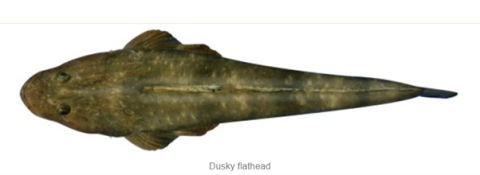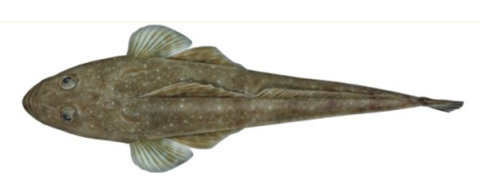The following information was released in the August 2022 edition of the DPI NSW Recreational Fishing Newsletter.
Following the recent changes to Dusky Flathead recreational fishing rules, this is a good time to refresh your identification skills of our popular flathead species.
First up is Dusky Flathead which is one of our more common species found in NSW estuaries and coastal bays and can be identified from other flathead species by its distinctive black spot at the end of its tail. Dusky Flathead vary in colour from sandy with brown spots and blotches to dark brown/black with white spots, and often have visible dark bars across the rear of the body. The new rules for this species are a daily bag limit of 5 per person and a slot limit of 36cm-70cm (fish measured outside this size range must be released back to the water).
Blue Spotted Flathead or known as Sand Flathead, are mottle brown in colour with small spots across their body. They can also be identified by their tail which has 3-5 black bars on the lower half (see below). This species is found along beaches and in estuaries of northern NSW, however, has been recorded as far south as Jervis Bay.
Tiger Flathead have bright orange/brown spots on the head and body, with red/brown spots on upper half of the tail. This species is predominantly found offshore but Tiger Flathead also inhabit shallow coastal bays. Tiger Flathead are more common south of NSW.
Blue spotted Flathead and Tiger Flathead (all flathead species other than Dusky Flathead) have a minimum size of 33cm and a combined bag limit of 10 per person (combined possession limit of 20). This combined bag limit means either comprised wholly of a single flathead species or a combination of species (except for Dusky Flathead).
For more information on bag and size limits, head to the DPI website. - https://bit.ly/3PLzsAD.





